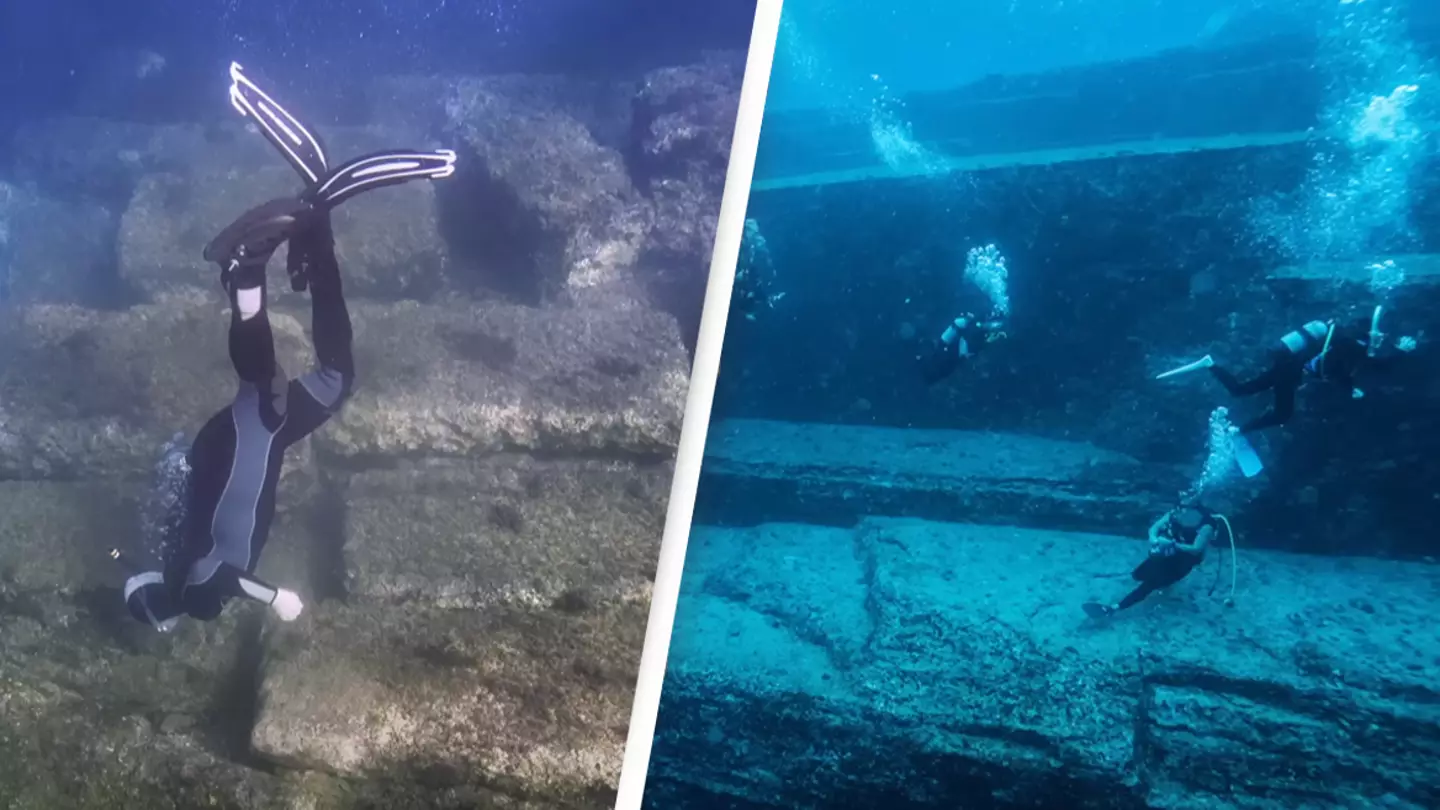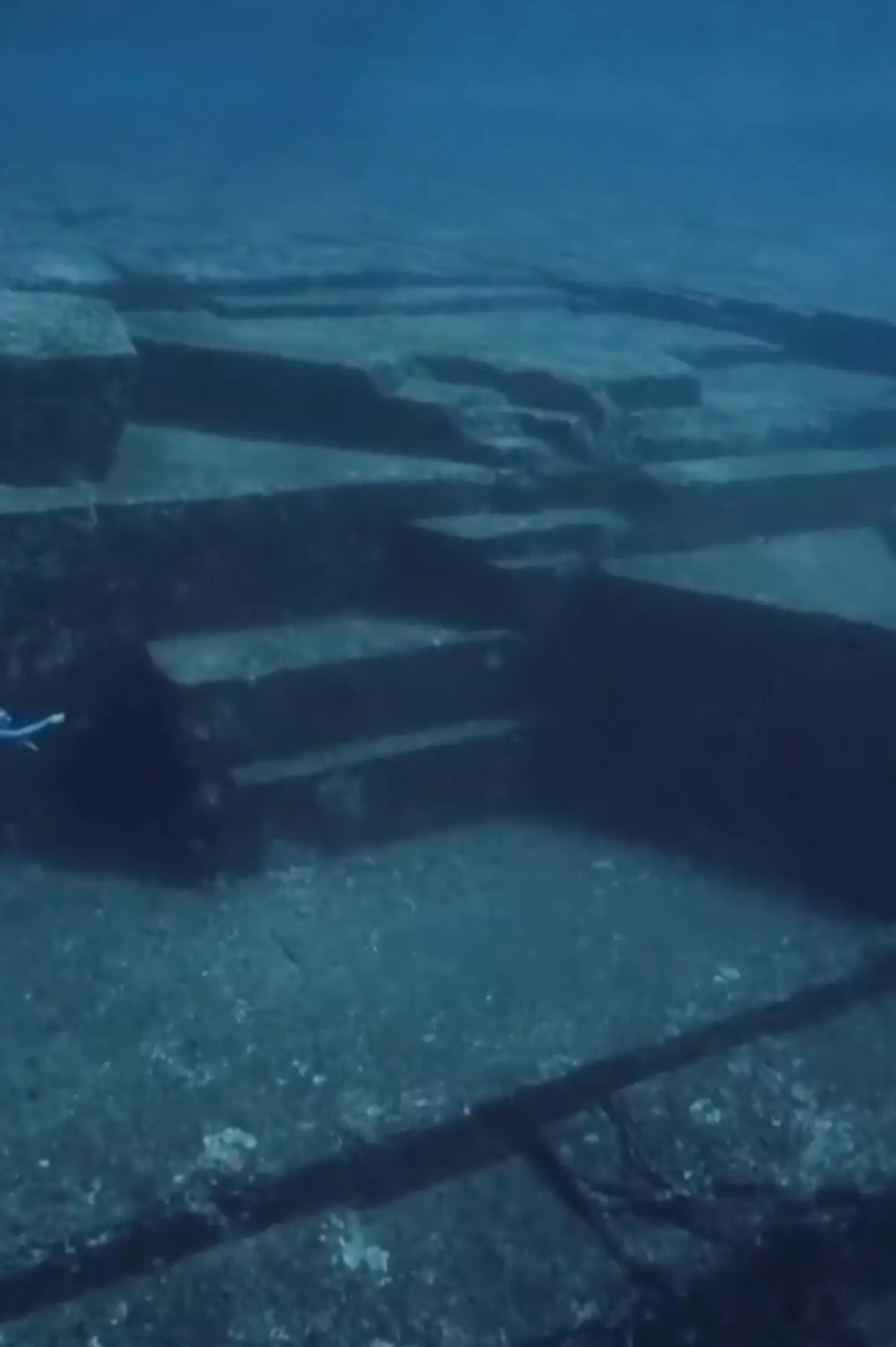
While Atlantis may only be a myth, this Japanese monument might be the closest thing to a real-life version of it.
Labelled the Yonaguni Monument, the pyramid-like structure was discovered by Kihachiro Aratake, a local diver, in 1987.
The top of the nine meter tall monument is a mere five meters below the surface, and is located near Japan's Yonaguni island.
It's believed that it could be the ruins of what once was a civilisation dating back as far as 10,000 years.
Advert
Some are convinced that there are remains of what looks to have once been castles, temples, a stadium, and even roads.
Recalling the moment he came across the monument, Aratake said he was 'very emotional'.
"I stumbled upon it by pure coincidence," the told the BBC.
"I was very emotional when I found it.
Advert
"Upon discovering it, I realized that this would become a treasure of Yonaguni island.
"I kept it a secret. I didn't tell anyone on my staff."

Following his discovery, a team of scientists started to research the mysterious rock formations alongside Aratake.
Advert
Professor Masaaki Kimura, of Ryukyu University, went on to label it as 'very difficult to explain away their origin as being purely natural' in light of 'the vast evidence of man's influence on the structures'.
Meanwhile, Aratake said it was the monuments 'spiral staircase' that convinced him that it was man-made.
As to who built it, one theory is that it was created by Jōmon people: hunter-gatherers who inhabited the islands as early as 12000 BC.
Many geologists have since studied the Yonaguni Monument for themselves and, while it could well be Japanese Atlantis, many have argued that it's just an unusual natural formation.

Robert Schoch, a professor at Boston University who has explored the site himself, previously told National Geographic: "It's basic geology and classic stratigraphy for sandstones, which tend to break along planes and give you these very straight edges, particularly in an area with lots of faults and tectonic activity."
Advert
Ryukyu University's Takayuki Ogata also thinks it was formed naturally. He went to visit the famous site in 2016.
"Upon first seeing it I immediately knew that the formations were similar to those on land," he said to the BBC.
"I've researched a lot of sites and done a lot of field work, but this was the first time I'd seen formations that were continuous from land to water."
Both sides of the argument for the Yonaguni Monument origins are yet to be proven right, leaving it as one of the world's biggest mysteries.
Topics: News, World News, Weird